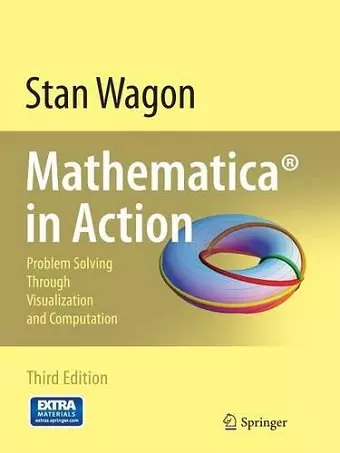Mathematica® in Action
Problem Solving Through Visualization and Computation
Format:Paperback
Publisher:Springer-Verlag New York Inc.
Published:11th Jun '10
Currently unavailable, and unfortunately no date known when it will be back

This book is an example-based introduction to techniques, from elementary to advanced, of using Mathematica, a revolutionary tool for mathematical computation and exploration. By integrating the basic functions of mathematics with a powerful and easy-to-use programming language, Mathematica allows us to carry out projects that would be extremely laborious in traditional programming environments. And the new developments that began with version 6 — allowing the user to dyna- cally manipulate output using sliders or other controls — add amazing power to the interface. Animations have always been part of Mathematica, but the new design allows the manipulation of any number of variables, an important enhancement. Mathematica in Action illustrates this power by using demonstrations and ani- tions, three-dimensional graphics, high-precision number theory computations, and sophisticated geometric and symbolic programming to attack a diverse collection of problems.. It is my hope that this book will serve a mathematical purpose as well, and I have interspersed several unusual or complicated examples among others that will be more familiar. Thus the reader may have to deal simultaneously with new mat- matics and new Mathematica techniques. Rarely is more than undergraduate mathematics required, however. An underlying theme of the book is that a computational way of looking at a mathematical problem or result yields many benefits. For example: Well-chosen computations can shed light on familiar relations and reveal new patterns. One is forced to think very precisely; gaps in understanding must be eliminated if a program is to work.
From the reviews of the third edition:
This book is a pleasing potpourri of Mathematica showpieces, picked to show the value of Mathematica for mathematics teaching and investigation... Although there is an introductory chapter explaining Mathematica, it is just enough to get you oriented and the examples go far beyond anything in this introduction. This book may motivate you to learn Mathematica but it won’t teach it to you.
The book is full of interesting things. The first half focuses on visualization and the math is relatively elementary (nothing beyond multivariable calculus). The second half works on much harder problems. —MAA Reviews
“Beginners will benefit from the book as will more experienced Mathematica programmers as the explorations build from simple introductory concepts … . The best feature of the book is that it teaches via interesting examples. … The writing is remarkably good. … The book contains a good number of color illustrations and is rich in Mathematica output. … interesting explorations with clear and engaging writing are hard to come by. I’m delighted to have this book in my collection.” (Playing with Mathematica, June, 2011)
Mathematica in Action is not a guidebook nor a reference manual. It is best described as a project book full of ideas and inspiration for research projects for anyone from high school students to professional mathematicians. It combines real mathematics with sophisticated coding… I highly recommend Mathematica in Action, both for its mathematical content and for its Mathematica content. You don’t have to be a serious Mathematica user to enjoy this book or even use it. You can read it for mathematical ideas and inspiration without touching a keyboard, or, if you are a devotee of a different software system, you might be inspired to translate the examples into your favorite language. —The MathematicalAssociation of America, September, 2011
“This the third edition of the famous book ‘Mathematica in Action’ in which the author guides beginner as well as veteran users alike through Mathematica’s powerful tools for mathematical exploration … .” (T. C. Mohan, Zentralblatt MATH, Vol. 1198, 2010)
ISBN: 9780387753669
Dimensions: unknown
Weight: unknown
580 pages
3rd ed. 2010